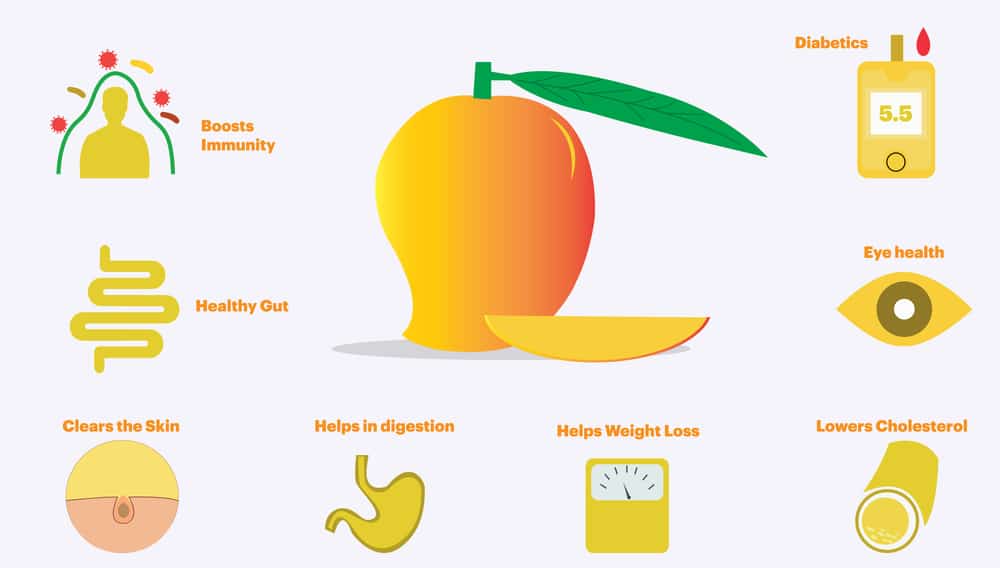Table of Contents
Summers are the usual mango season in most parts of the world. Therefore, when the summer arrives, the markets get loaded with various mango varieties such as Alphonso, Thai mangoes and Carabao mangoes. Each mango variety is different from others in size and shape. In this article, we will discuss the Honey mango, also known as Ataulfo or Champagne mangoes, distinguished by their oblong shape and skin, which turns a deep golden yellow when ripe. Originating from Mexico, this mango variety is perfect for both fresh eating and use in cooking because of its smoother and less fibrous texture.
Nutritional Benefits

One of the key characteristics of mangoes is their rich nutritional profile. Mangoes are packed with 20 different vitamins, minerals and antioxidants.
- The nutritional value of the honey mangos is remarkable; these fruits are loaded with vital minerals and vitamins, such as A and C, essential for maintaining good health.
- Honey mangoes have a sweet taste but are low in calories, so they are an ideal option for anyone controlling their calorie intake.
How to Eat Honey Mango

To enjoy these delicious fruits to their fullest, you must learn how to consume honey mango. The following advice will help you include honey mangos in your diet:
Check the Ripeness
to check the ripeness, Press the mango lightly. If it yields slightly, it is ready to eat. Also, the skin of the mango should be Bright golden yellow in color.
Peeling and Slicing
Start by peeling the skin. Honey mangoes have smooth skin and are small, making them easy to handle. Cut the flesh into cubes or slices after cutting it away from the bone.
Enjoying Fresh
Eating a ripe honey mango is the best way to enjoy it. Its natural sweetness makes it an ideal distinct treat.
Honey Mango Recipes

Honey mangoes, prized for their distinct taste and texture, are a mainstay in salads, smoothies, and desserts.
1. Mango Honey Salsa
Honey mangoes are perfect for making a refreshing salsa. Chop the red onion, cilantro, jalapeño, lime juice, and salt. Add the diced mango to the mixture. This salsa works perfectly with grilled fish or chicken.
2. Mango Sorbet
Indulge in the creamy richness of honey mango by making this simple mango sorbet. Combine a variety of mango, cane sugar, and water to produce this refreshing dessert ideal for summer.
3. Honey Mango Salad
Make a tropical salad combining sliced honey mangos with mixed greens, avocado, cherry tomatoes, and a light vinaigrette. This salad is both refreshing and fulfilling.
Storage Tips
Honey mangoes should be kept at room temperature until they ripen to maximize their shelf life. Once ripe, they can be kept in the refrigerator for a few more days to preserve their freshness. If you have excess ripe mangos, you can freeze the slices for smoothies or desserts later.
Health Benefits

Eating honey mangos has a lot of health advantages.
- They include a lot of dietary fiber, which facilitates digestion.
- Honey mangoes’ high vitamin A and C content promotes healthy skin and a strong immune system.
- Furthermore, these mangoes’ natural sugars give you a rapid energy boost.
- Due to their numerous health benefits, the National Mango Board recommends including mangoes in a balanced diet.
- Their findings suggest that mangoes, especially honey mangoes, improve digestive health and have anti-inflammatory and cardiovascular health benefits.
Conclusion
Honey mangoes are distinct from the other mango varieties due to their oblong shape and deep golden yellow color. Their smooth and less fibrous texture and rich nutritional content make them ideal ingredients for use in versatile recipes. Their soft, buttery texture adds a unique flavor to any meal, whether eaten fresh, in a smoothie, or as part of a savory recipe. Honey mangoes, abundant in vitamins, minerals, and antioxidants, complement any diet promoting general well-being. So, savor the sweetness of honey mangoes and allow their lively flavor to enhance your meals and overall mood.

